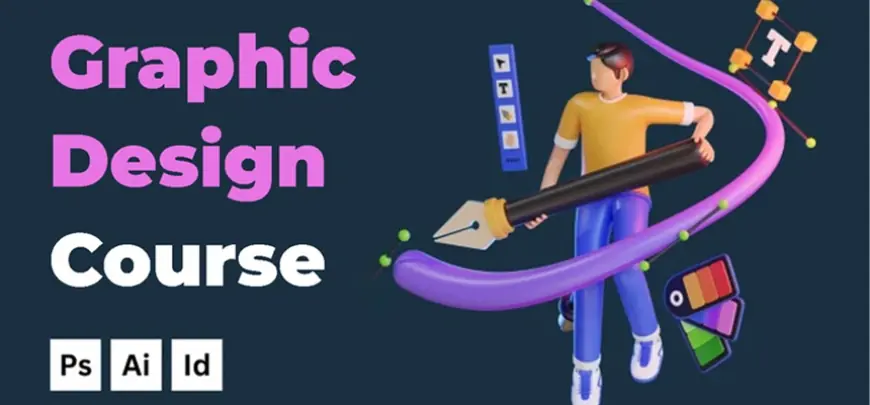From Zero to Pro Designer: The Must-Have Skill Every Business Craves in 2025

Introduction: Why Design Is the Business Superpower of the Future
In today’s fast-paced digital landscape, design is no longer a luxury—it’s a necessity. Whether it’s crafting engaging social media content, building intuitive websites, or creating brand-defining visuals, businesses live and die by their design. And the best part? You don’t need a fancy degree or years of experience to break in. With the right mindset and tools, you can go from zero to a professional designer, unlocking doors to freelance income, career advancement, and entrepreneurial success Why Every Business Needs a Graphic Designer – Learn the Skill Now
This article will show you how to learn design from scratch—even if you’ve never opened Photoshop before. We’ll answer frequently asked questions, uncover expert strategies, and give you the confidence to start now. Because in 2025, design is not optional—it’s the skill every business needs.
Why Businesses Need Designers Now More Than Ever
1. Visual Content Dominates Online Platforms
Studies show that content with relevant images gets 94% more views than content without. With social media algorithms favoring visual content, businesses are investing heavily in graphics, branding, and UX/UI to stand out in saturated markets.
“Design is the silent ambassador of your brand.” — Paul Rand
2. Good Design Drives Conversions
Eye-catching visuals don’t just attract attention—they influence purchasing decisions. According to Adobe, 38% of people will stop engaging with a website if the content or layout is unattractive. Design directly impacts a company’s bottom line.
3. In-House Design Talent Saves Time and Money
Instead of outsourcing every small change or ad banner, businesses prefer having agile, multi-skilled team members. Learning design makes you more valuable, versatile, and employable.
From Zero to Designer: Your Roadmap to Success
Step 1: Learn the Foundations of Design Thinking
Every great designer starts with design thinking—a solution-focused approach that puts the user first.
Key concepts to master:
-
Hierarchy: Direct the viewer’s eye with scale and contrast.
-
Typography: Choose fonts that align with your brand voice.
-
Color Theory: Use colors to invoke emotion and clarity.
-
Balance & Alignment: Create harmony and professionalism in layouts.
Pro Tip: Study top brands like Apple, Airbnb, and Canva. Dissect their websites, logos, and ads to understand what works.
Step 2: Master Modern Tools (Without Overwhelm)
Don’t start with the most complicated tools. Choose platforms that match your goals.
Beginner-friendly tools:
-
Canva – Ideal for social media, presentations, and quick designs.
-
Figma – Perfect for UX/UI and collaborative workflows.
-
Adobe Express – Fast-track for content creation with templates.
-
Gravit Designer – A free, powerful vector design app.
Once you’re confident, move into advanced software like Adobe Photoshop, Illustrator, or XD.
Actionable Insight: Stick with one tool until you’re confident. Don’t bounce between platforms too early.
Step 3: Build a Portfolio, Even Without Clients
No one hires without proof of work. But that doesn’t mean you need paying clients.
How to build a powerful beginner portfolio:
-
Redesign a brand you admire.
-
Create mock ads or social posts.
-
Build UI for a fake app or website.
-
Document your process with before-and-after shots.
A study by Behance revealed that designers with project storytelling in their portfolios were 40% more likely to be hired.
Step 4: Learn the Business of Design
Design isn’t just an art—it’s a business. Understanding marketing, branding, and copywriting gives you an edge.
Essential skills:
-
Client communication
-
Pricing and invoicing
-
Licensing and usage rights
-
Brand strategy
Tip: Follow business-savvy designers on YouTube and LinkedIn. Their real-world insights are worth gold.
Step 5: Get Real-World Practice Fast
Start small, but start now. Apply your skills in real projects to build confidence and credibility.
Quick-start ideas:
-
Offer free work for a local nonprofit.
-
Join design challenges (e.g., Daily UI).
-
Freelance on platforms like Upwork, Fiverr, or Contra.
-
Volunteer for startups or student projects.
Urgency Tip: Don’t wait until you're “ready.” You’ll learn more in 1 real-world project than 10 tutorials.
FAQs: From Zero to Designer
Q1: How long does it take to become a professional designer?
With consistent effort, you can become client-ready in 3-6 months. Focus on daily practice, not perfection.
Q2: Do I need formal education to become a designer?
No. Most businesses care about your portfolio and problem-solving ability, not your degree.
Q3: Can I learn design while working a full-time job?
Absolutely. Use tools like Canva during breaks or evenings. Many successful designers started part-time.
Q4: How much can a freelance designer earn?
Freelancers charge anywhere from $25 to $150+ per hour, depending on skill, niche, and experience.
Q5: Is AI replacing designers?
AI enhances creativity but can’t replace strategic, human-centered design thinking. Designers who embrace AI tools (like Adobe Firefly or MidJourney) will thrive.
Conclusion: The Time to Start Is Now
Design isn’t just a creative pursuit—it’s a career-defining, income-boosting, opportunity-multiplying skill. From startup founders and social media managers to corporate marketers, everyone benefits from design literacy.
You don’t need to be born with artistic talent. You need commitment, curiosity, and a clear roadmap—like the one you’ve just read.
What's Your Reaction?
 Like
0
Like
0
 Dislike
0
Dislike
0
 Love
0
Love
0
 Funny
0
Funny
0
 Angry
0
Angry
0
 Sad
0
Sad
0
 Wow
0
Wow
0
















































